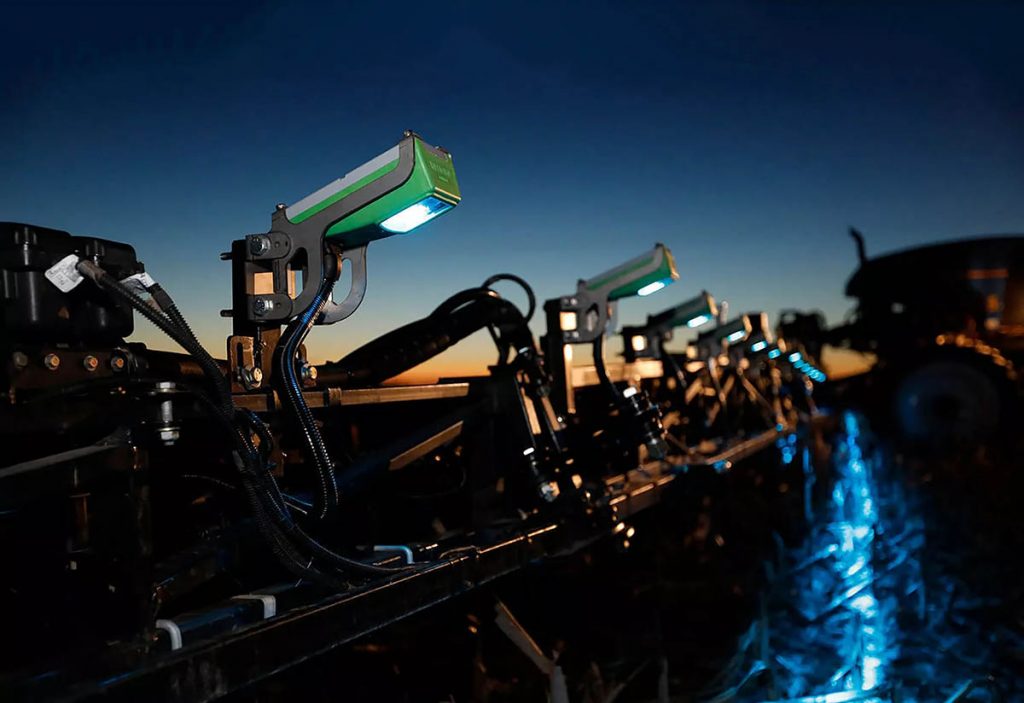
By Yiannis Ampatzidis
Farmers use mainly agrochemicals for weed control and follow conventional crop protection strategies that use a vast amount of chemicals, despite some negative impacts on the environment and human health. More than 90% of the acreage of crops in the United States is sprayed with herbicides. It is estimated that around $31.5 billion was spent on herbicides globally in 2020. The use of herbicides has eliminated the need for manual labor to pull weeds out of fields and has resulted in reduced production costs and increased crop yields.
Most conventional broadcast sprayers apply agrochemicals uniformly, even though distribution of weeds is typically patchy, resulting in wastage of valuable compounds, increased costs, crop damage risk, environmental pollution and contamination of products. Additionally, plant resistance to herbicides is posing a great threat to crop production in many countries. There are currently 263 species of herbicide-resistant weeds globally.
EFFICIENCY AND SAFETY
Hence, there is an urgent need to redesign conventional sprayers and optimize agrochemical applications, without affecting agricultural yield. For example, herbicides are mainly applied using hydraulic and hydro-pneumatic sprayers that have high inefficiencies. This results in significant amounts of active ingredient ending up elsewhere in the environment and contaminating natural resources.
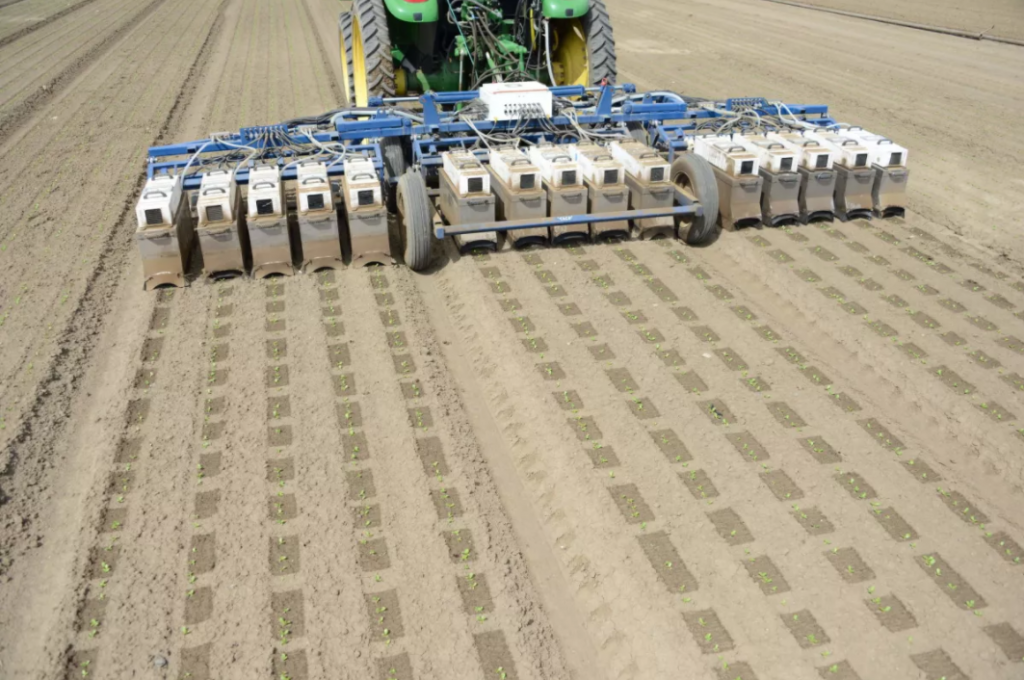
Contamination can be caused by run-off from the field, discharge from drainage, and spray drift (off-target deposition of spray). Spray drift usually occurs when small droplets of the spray liquid are carried away by the wind onto the neighboring crops/fields, which results in herbicide residues on plant products. This may cause damage to the crops and can also be carried over to the end consumer, possibly having a significant effect on human health. Therefore, the use of herbicides should be as minimal and as efficient as possible to eliminate negative environmental impacts and to promote agricultural sustainability.
New spraying technologies have shown a significant improvement in terms of efficiency and safety by adopting the latest advances in electronics, artificial intelligence (AI) and automation. Machine vision and AI have been used to develop “smart” sprayers that can optimize agrochemical applications. A smart sprayer system needs to be able to locate weed spots in real time and spray the desired chemical only on the proper location.
Machine vision has been used for many years now to distinguish vegetation from the soil background through image segmentation processes due to color difference between them. But now, AI can help to distinguish crops from weeds, and even classify weeds based on their species (e.g., grass or broadleaf). A smart sprayer now can target individual weeds instead of spraying the entire field, thereby reducing costs, risk of crop damage and excess pesticide residue, as well as potentially lessening environmental impacts. Several research and commercial smart spraying technologies are presented in this article.
EQUIPMENT OPTIONS
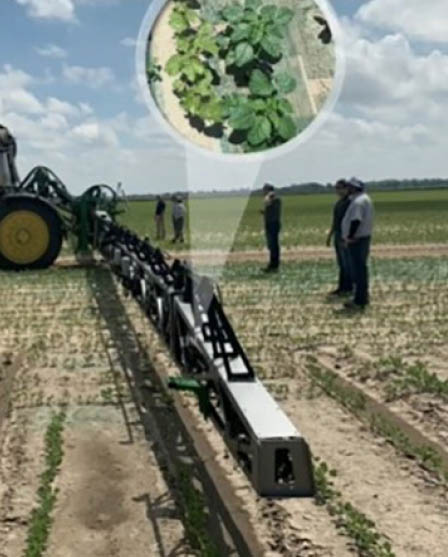
WEED-IT precision spraying system, developed at the Wageningen University in the Netherlands, can be built onto any type of sprayer. By utilizing blue LED lighting, the system can identify weeds for spot spraying (Figure 1). This system targets all living green material; it cannot distinguish weeds from crops. It is also able to vary the rate of individual nozzles continuously by pulse width modulation. The company claims that this system can save up to 90% on chemical costs.
See & SprayTM, a novel sprayer developed by Blue River Technology in the United States, which was acquired by John Deerein 2017, utilizes computer vision and deep learning (AI methodology) to identify a variety of weeds and crops. It directs micro-doses of herbicides to the target weeds. See & SprayTM was first used for lettuce thinning in California (Figure 2). It is now used for weed control in cotton and soybeans (Figure 3).
Bilberry, a French company, introduced an intelligent spot-spraying system compatible with most sprayers that the company claims can reduce herbicide usage by more than 80%. This camera-based system utilizes deep learning to recognize weeds within crops and only sprays on the weeds. It can also create weed maps automatically.
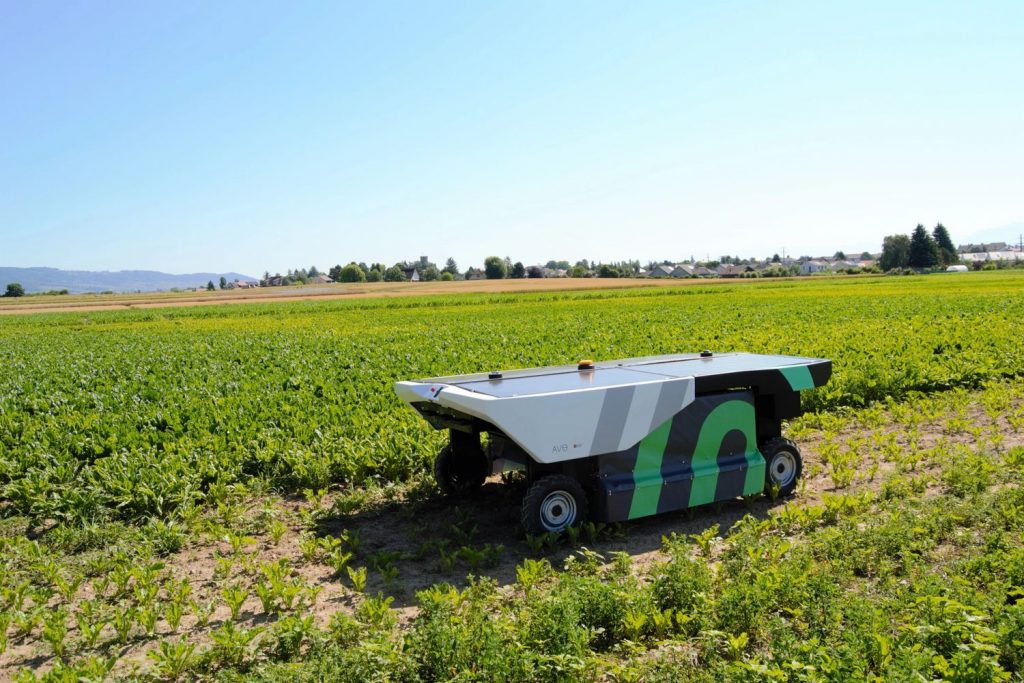
A similar camera- and AI-based technology has been developed by Agrifac, a Dutch manufacturer. This product, AiCPlus (“I see Plus”), can detect weeds and apply herbicides only on them.
Another similar technology, Robocrop, is an in-row spot sprayer designed by Garford in England. It was initially used to treat rogue potatoes growing in carrots, parsnips and onions. Now, it is planned to be used for weed control in other crops.
EcoRobotix, a company from Switzerland, is developing a solar-powered autonomous weeding robot called AVO (Figure 4). It’s for row crops (currently sugar beets and green beans, and soon spinach, onions and salads), meadows and intercropping cultures. The robot can treat up to 10 hectares per day and use up to 95% less herbicides (based on EcoRobotix’s estimations). It integrates RTK-GPS and machine vision for precision navigation within a field. It can distinguish weeds from crops by using machine vision and AI.
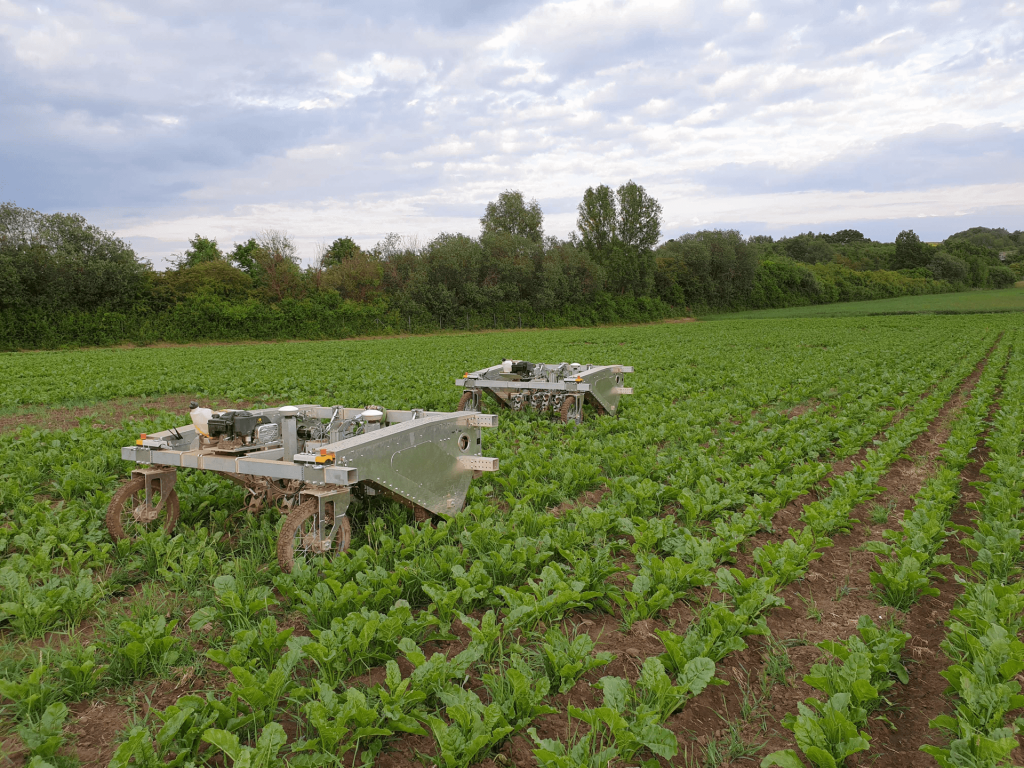
Another autonomous spraying robot is under development at the University of Florida Institute of Food and Agricultural Sciences (UF/IFAS), in collaboration with Carnegie Mellon University, for precision weed management in multiple vegetable crops (e.g., peppers, tomatoes, etc.). This low-cost and self-adjustable robot (to fit in different row spacing and bed profiling) utilizes machine vision and AI to simultaneously scout for a variety of weeds and spray with the desired herbicide on specific types of weeds (e.g., grass, broadleaf and other). This project is funded by the National Science Foundation’s National Robotics Initiative and the U.S. Department of Agriculture.
Farming Revolution, a German company, developed autonomous robots for mechanical (non-chemical) weed control in sugar beet, lettuce and brassicas. The robots (Figure 5) utilize machine vision and deep learning to distinguish crops from weeds as well as a mechanical chopper to remove weeds without the use of chemicals. This technology also can be used in organic farming. Similarly, Zasso, a Japanese tech company, develops several technologies for non-chemical weed control utilizing electric weeding solutions.
Yiannis Ampatzidis (i.ampatzidis@ufl.edu) is an assistant professor at the UF/IFAS Southwest Florida Research and Education Center in Immokalee.









